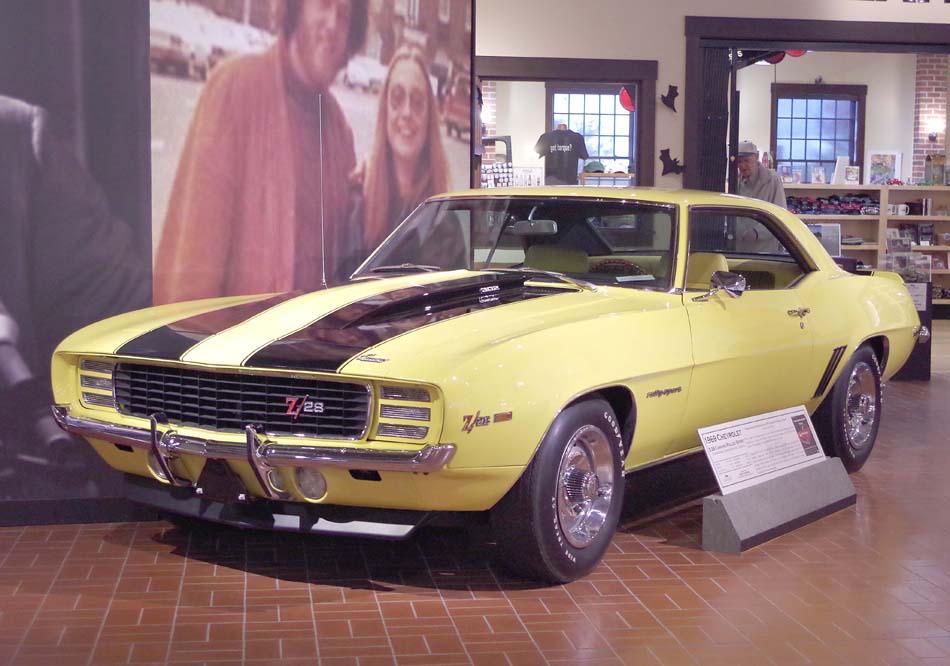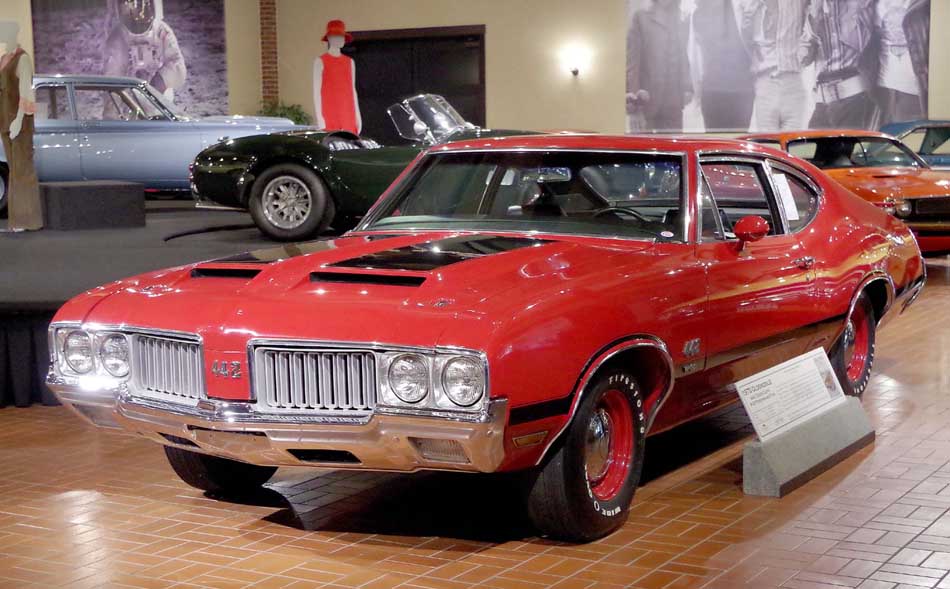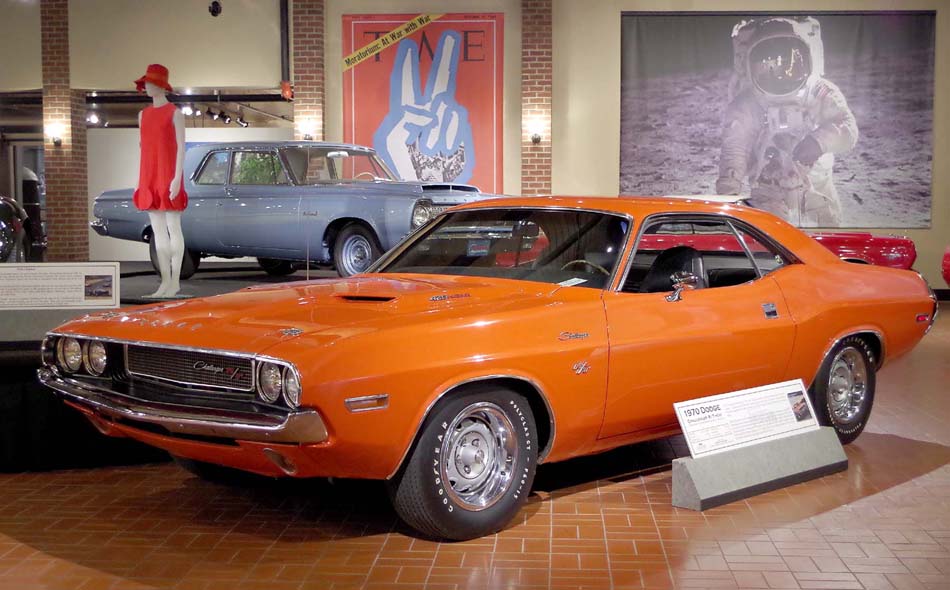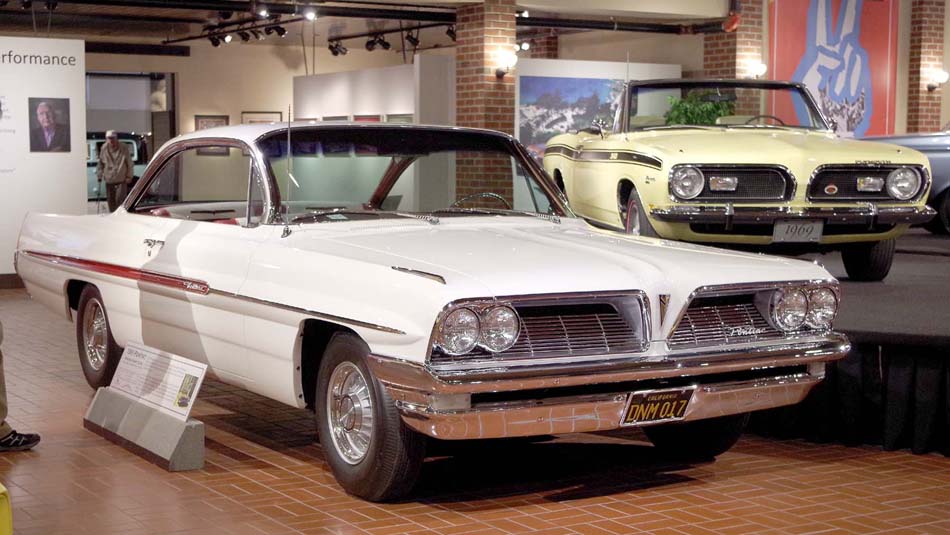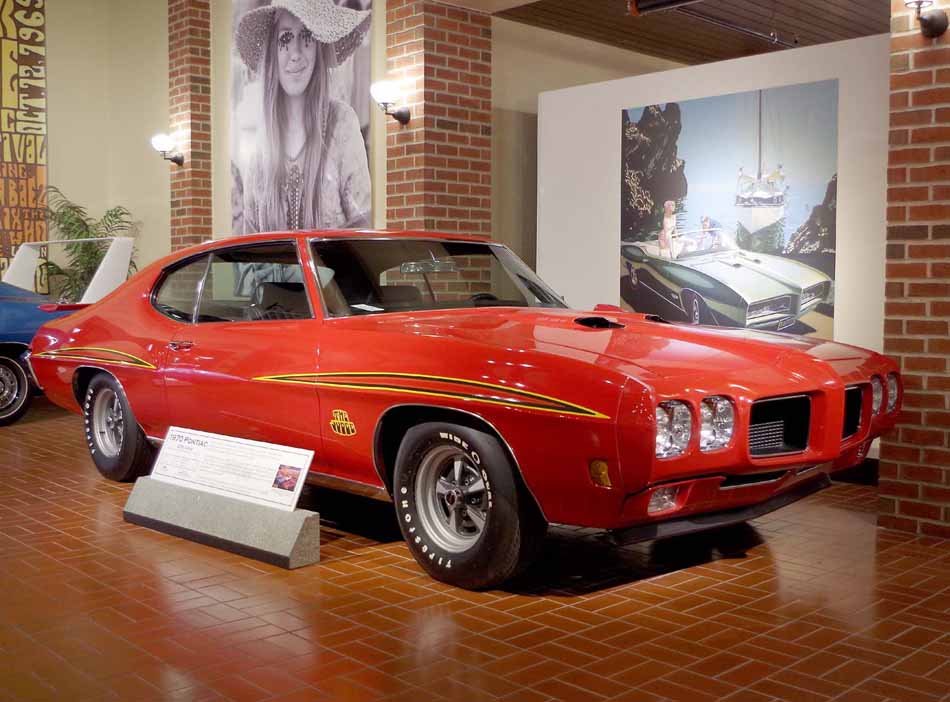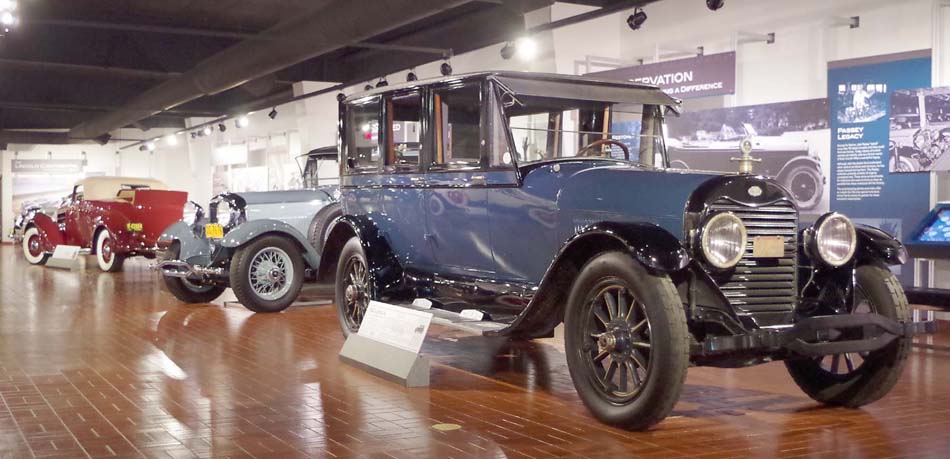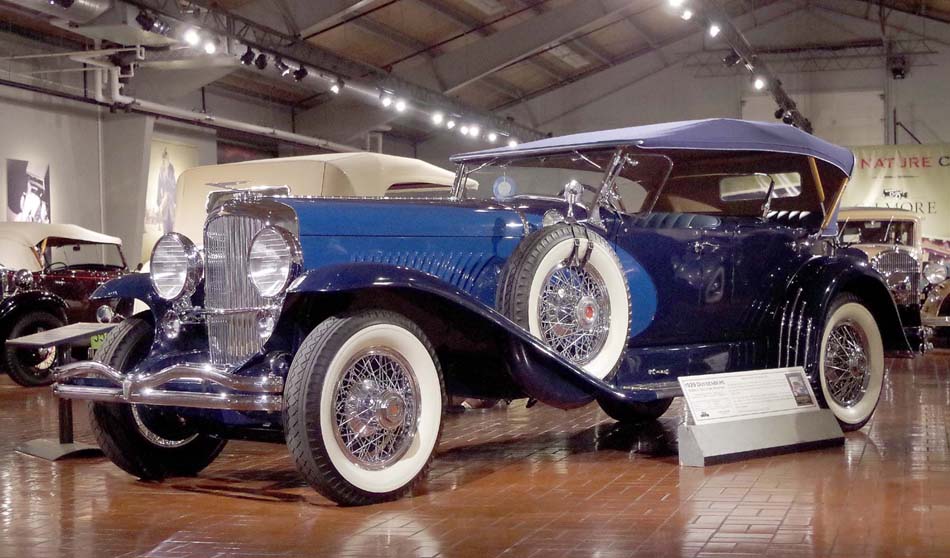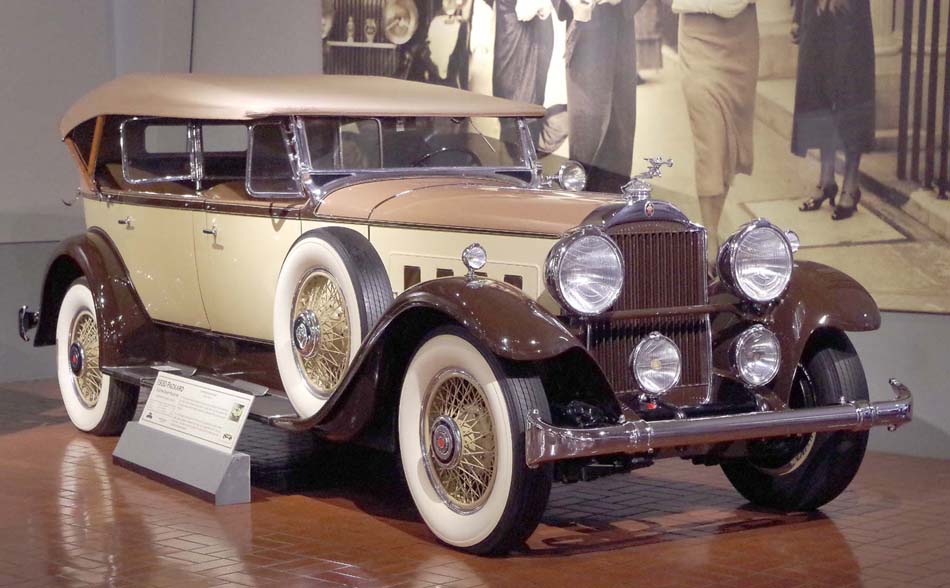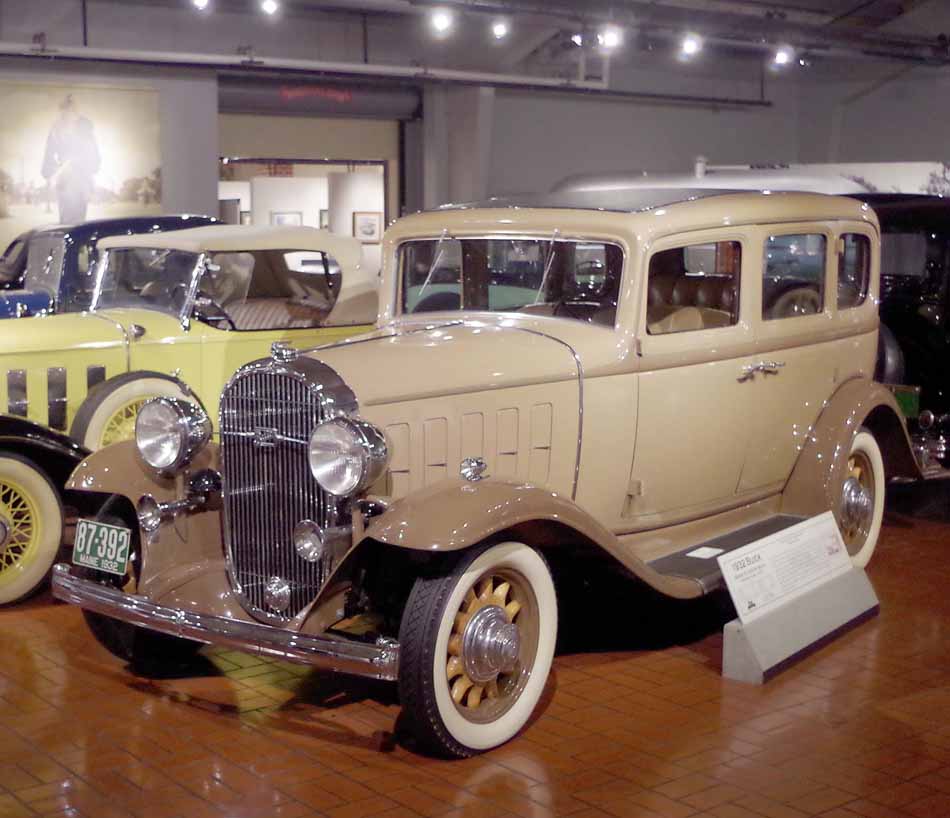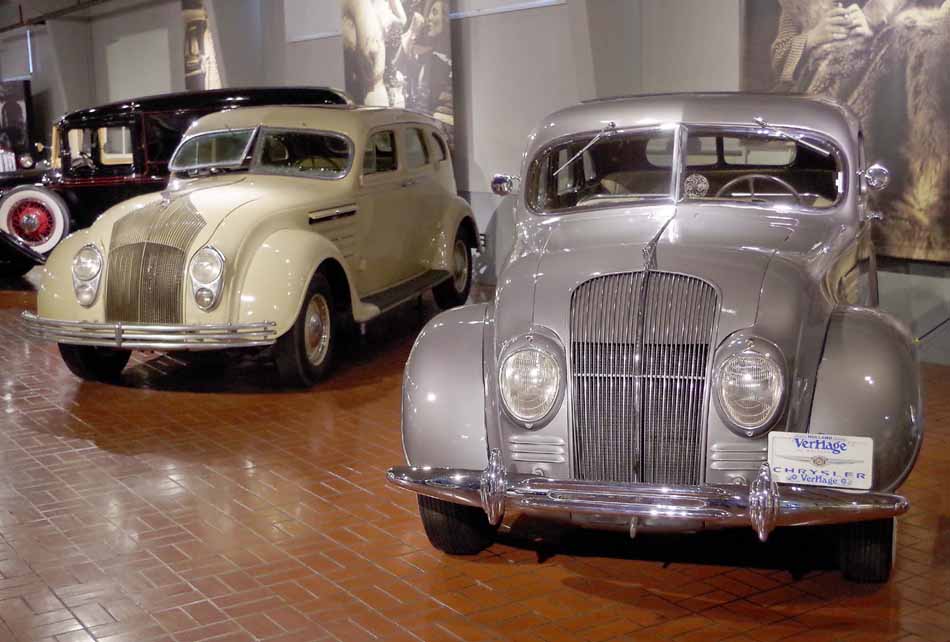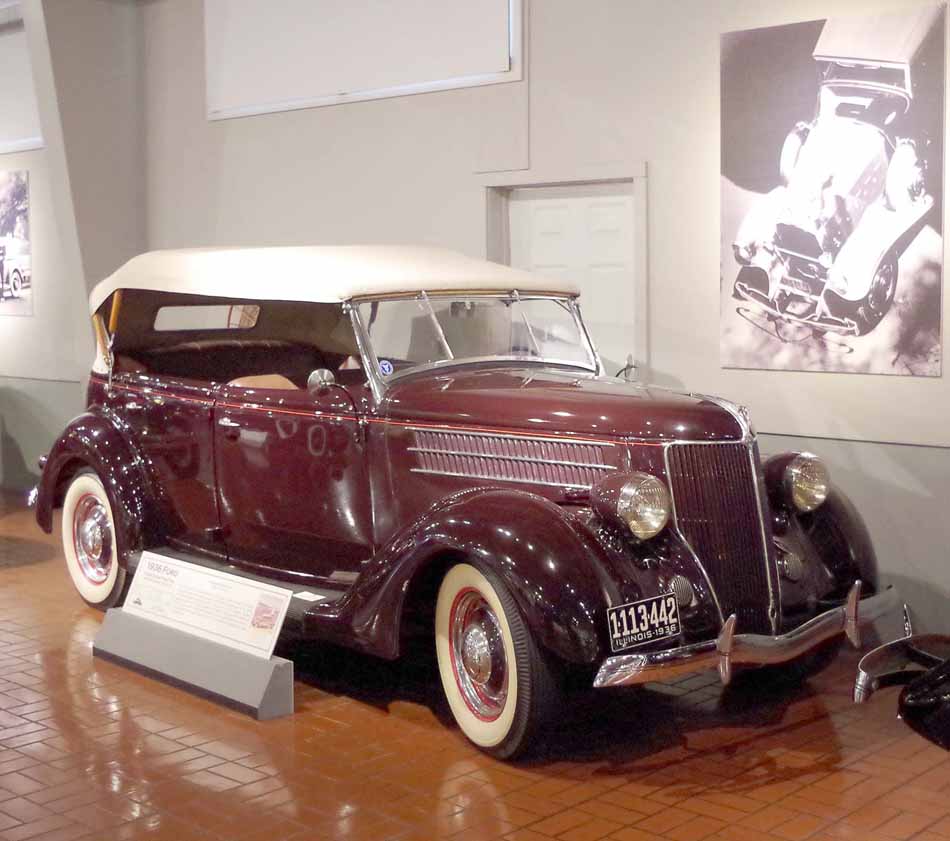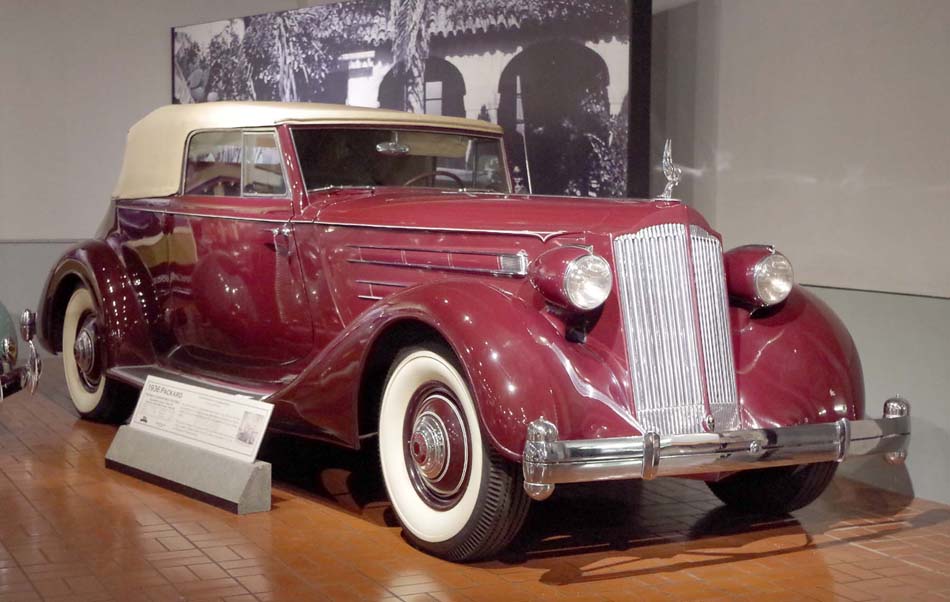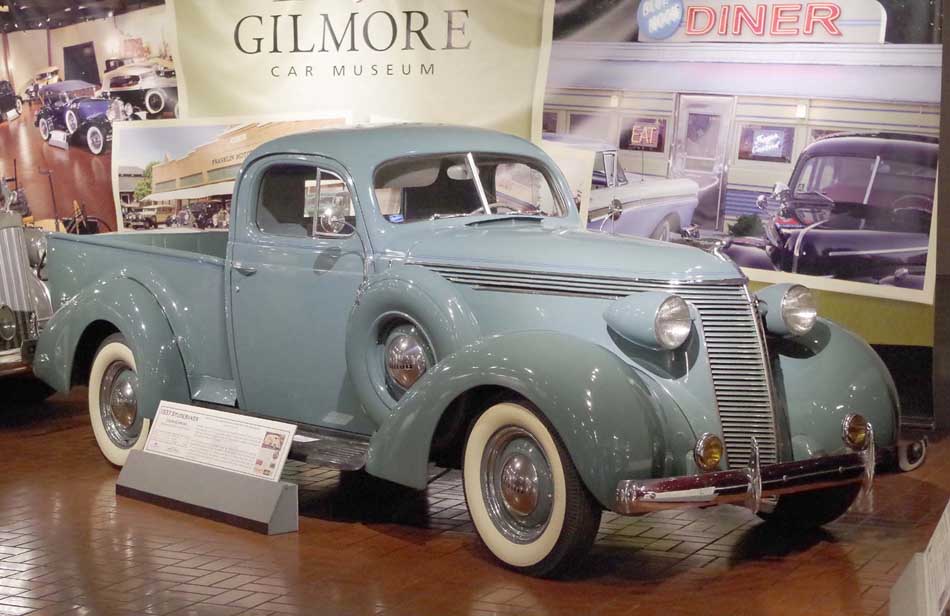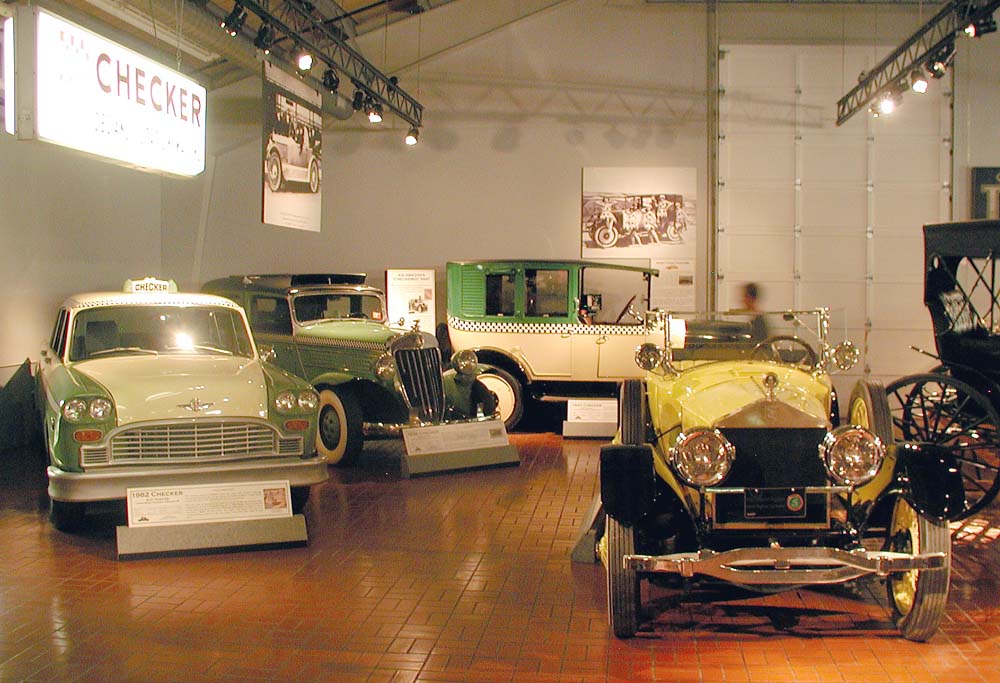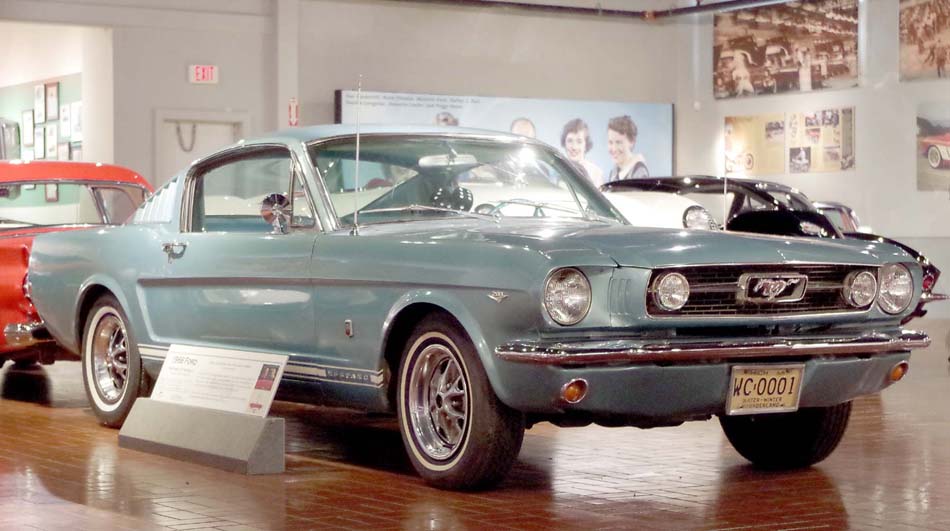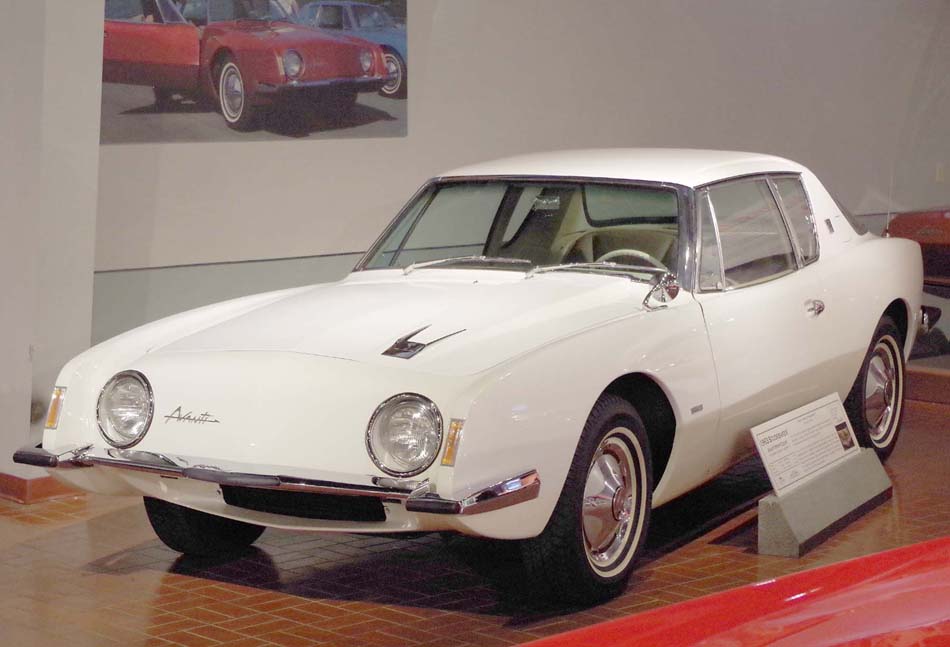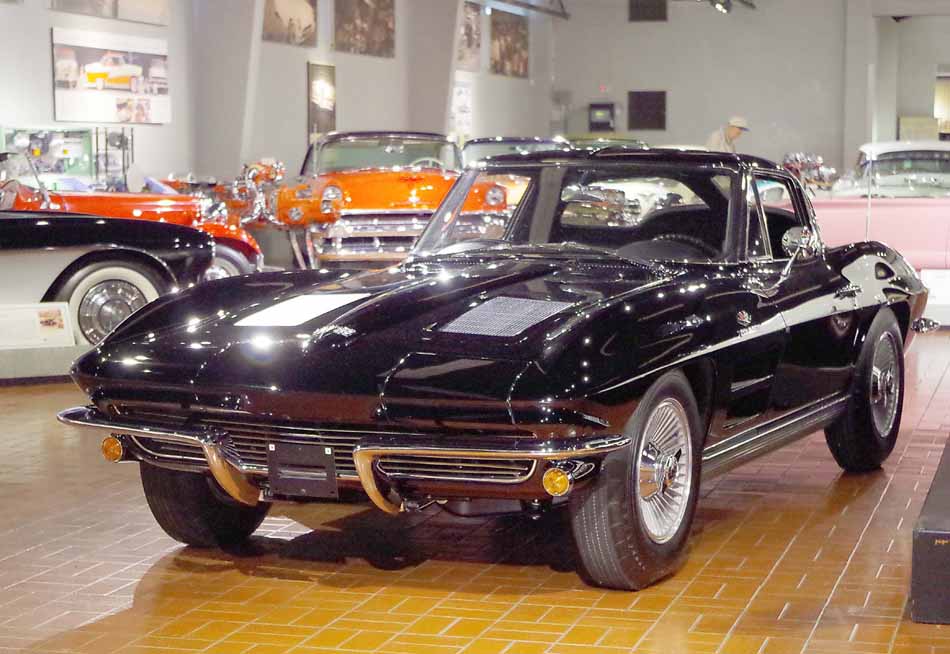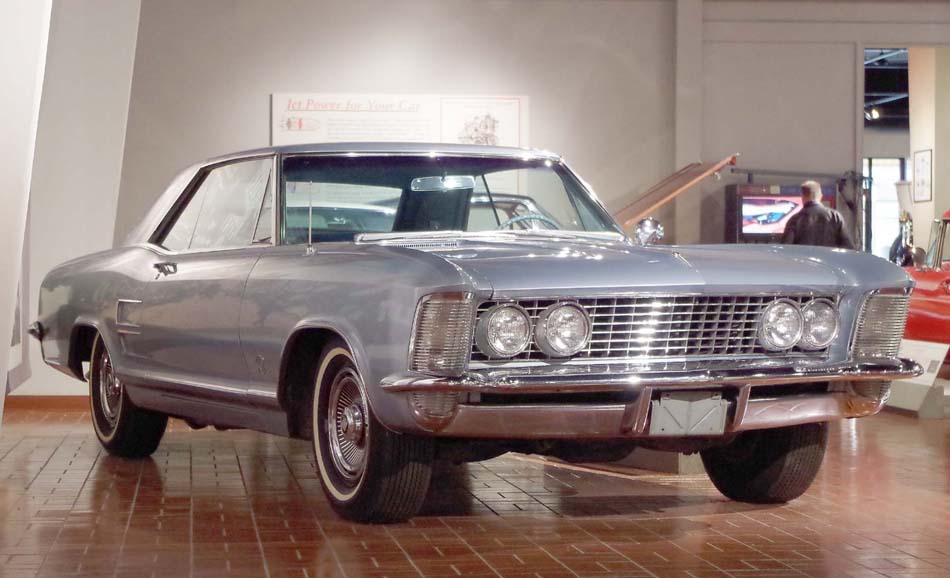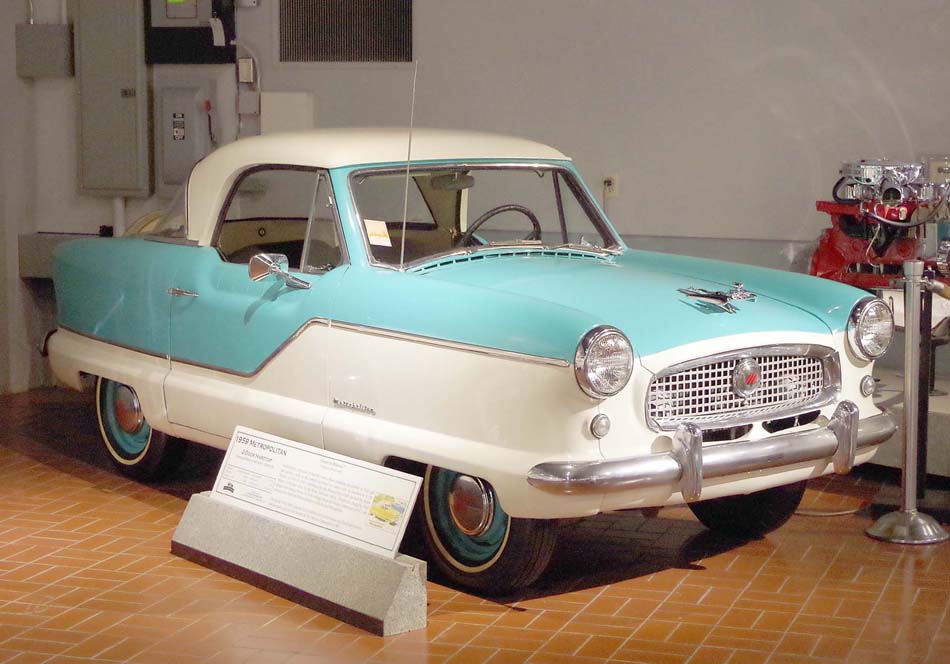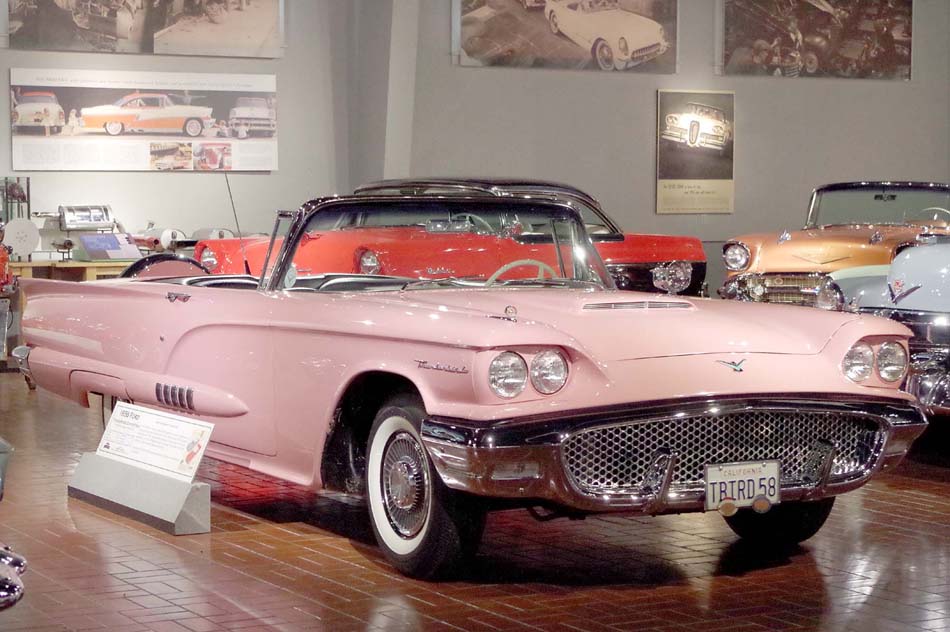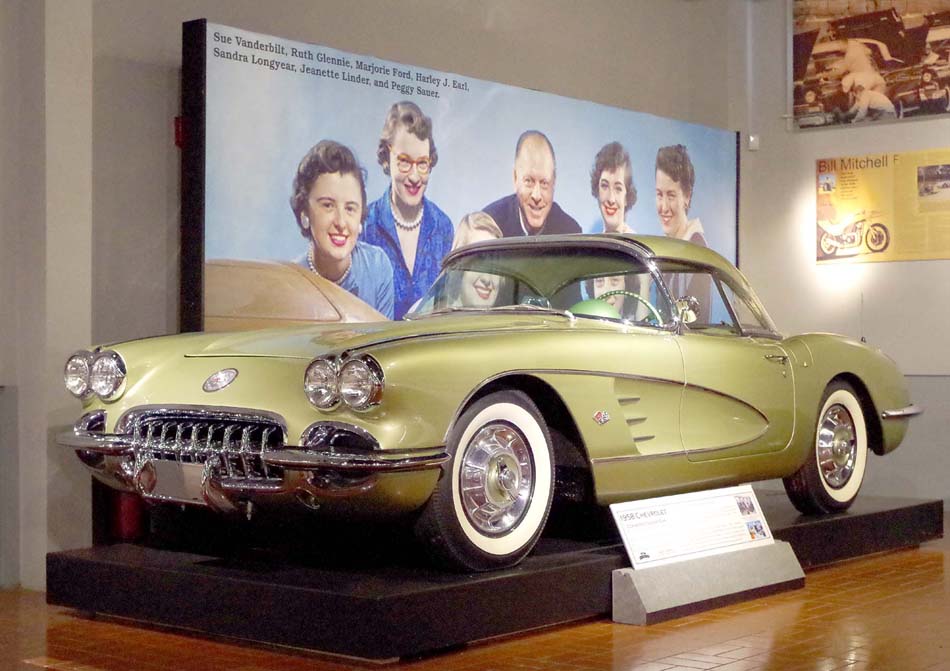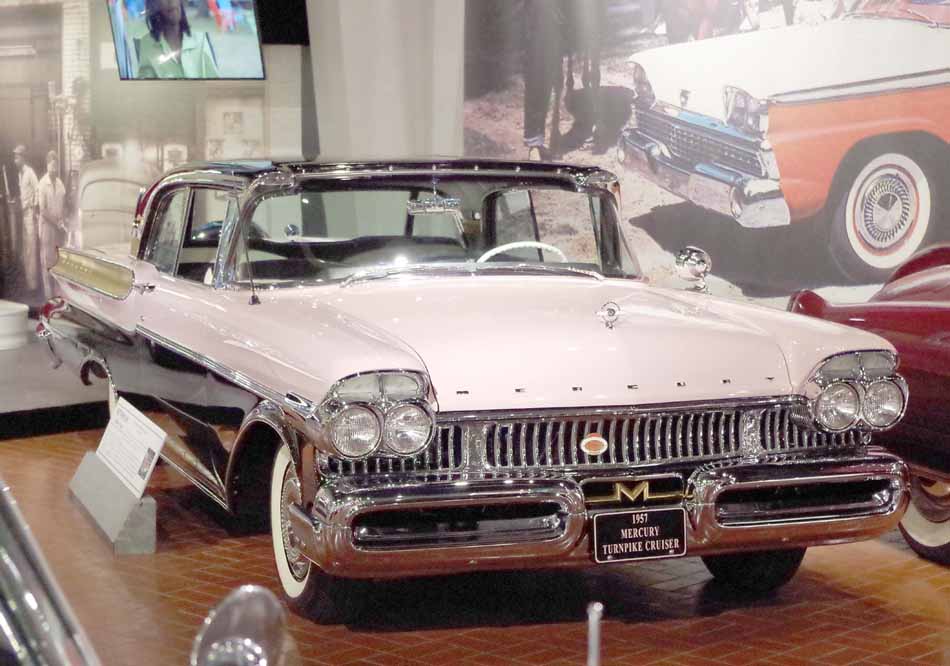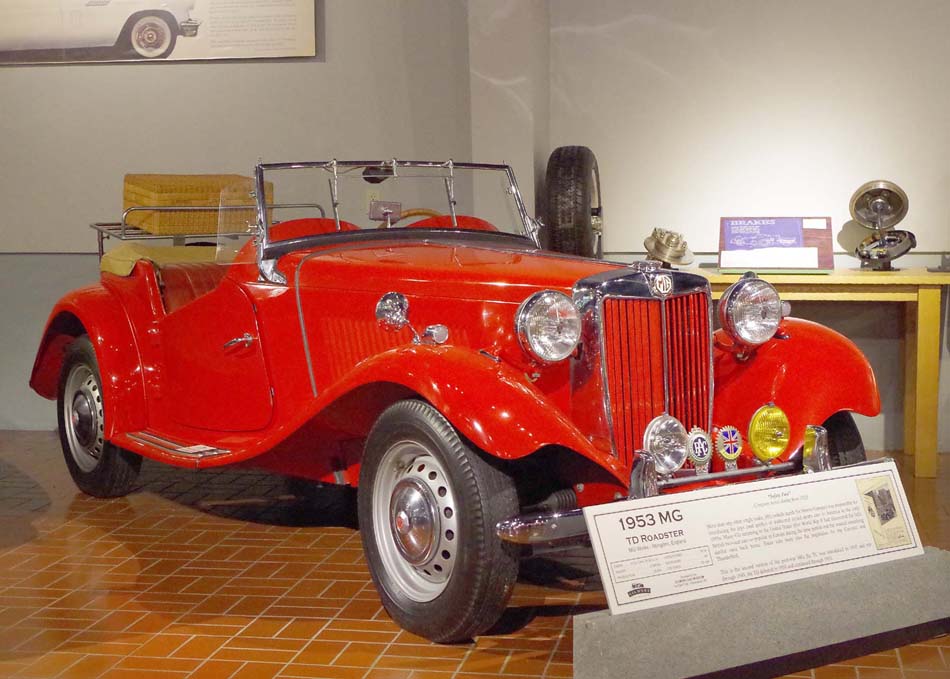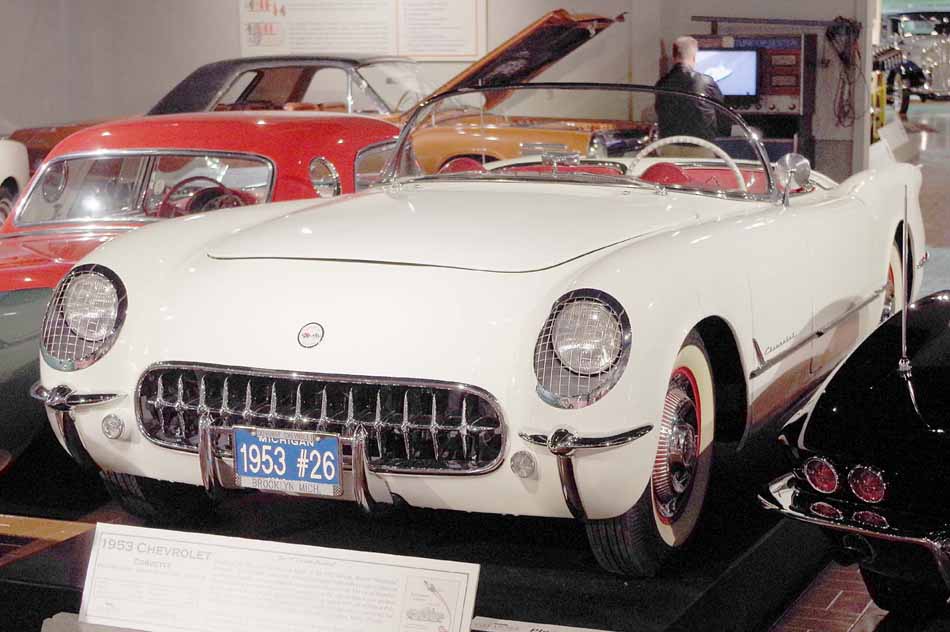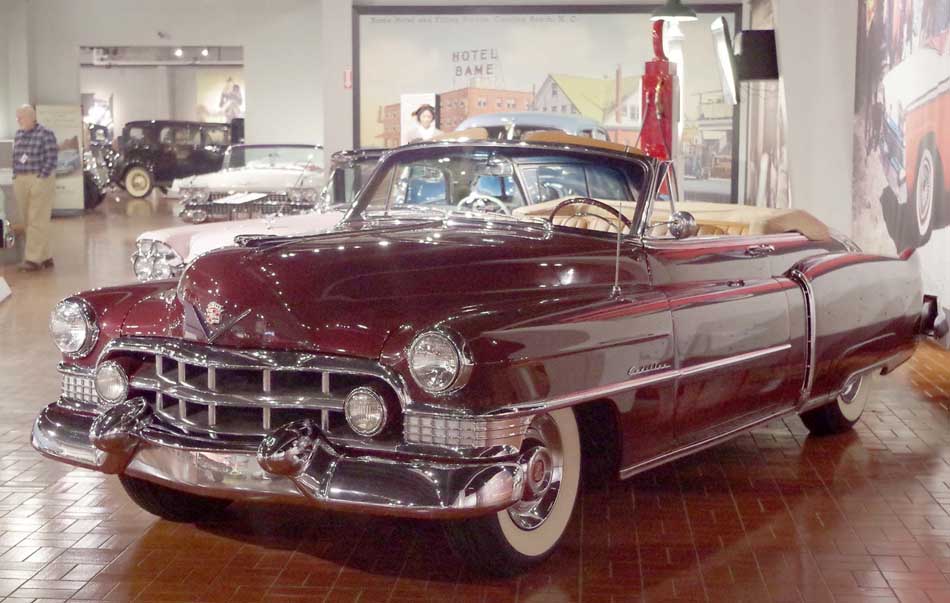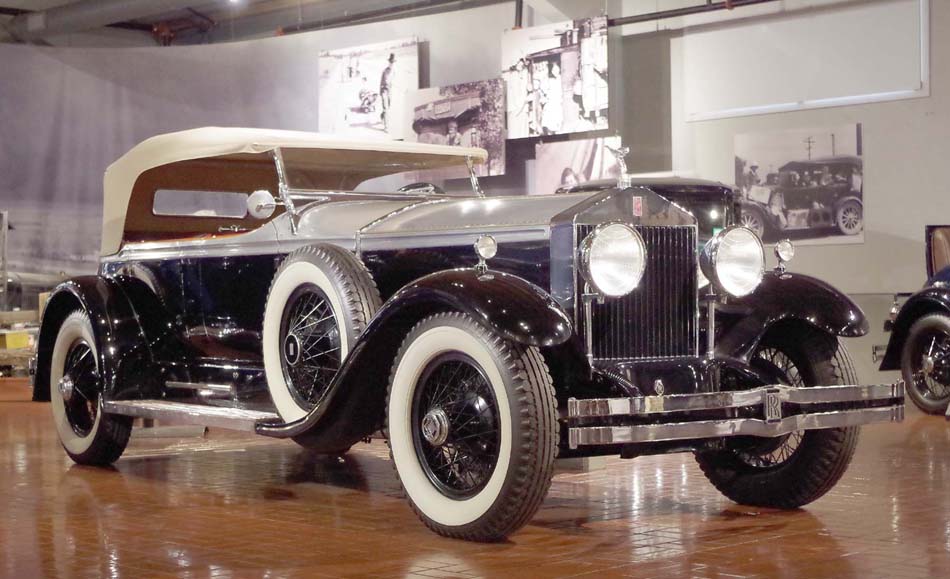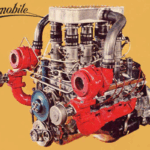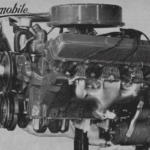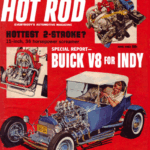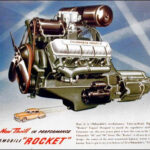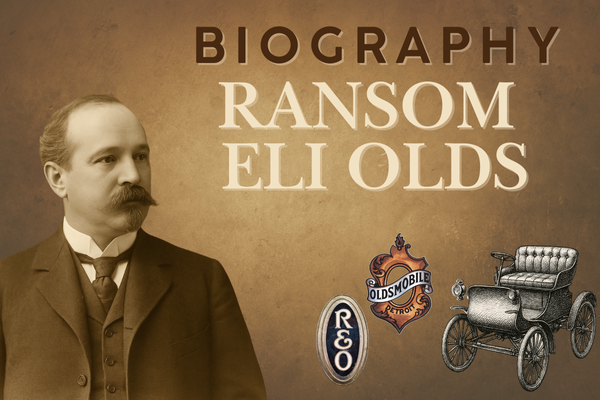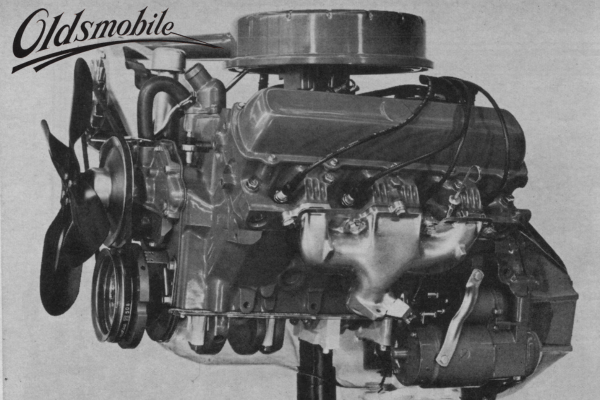
Aerial view of the Gilmore campus. Courtesy of the Gilmore Car Museum. As can be seen, there is plenty of overflow parking and a spacious on-the-grass display area on the far side of the building complex
Story by Eric White, photos by the author, and the Gilmore Car Museum
This past fall, the AHPS jumped at the chance to visit one of the most respected and unique vehicle museums in the world. The red barns of the Gilmore Car Museum sits on ninety acres of Southwestern Michigan farmland. It’s been about three years since we paid a visit to the Gilmore, and a few very significant additions have been added during that interim.
Donald Sherwood Gilmore (1895-1979) was born into the family that owned the Gilmore Brothers department store (1888-1999) in Kalamazoo. Gilmore’s early business acumen was acquired through his experience managing the store. By 1930, Gilmore moved on and took a leadership role in his step-father’s business, the Upjohn Company. In 1944, Gilmore was named President of Upjohn Co. By the early 1960s, Gilmore had retired from Upjohn and was looking for a hobby to keep himself busy. His wife, Genevieve, bought him a 1920 Pierce Arrow in 1963. The new hobby agreed with Gilmore, and by1966 the Gilmores had acquired over forty collector vehicles. The sheer volume of collector vehicles and the desire to have a spacious area to work on the growing collection led to the purchase of a large tract of land situated between Kalamazoo and Battle Creek, MI. The location of this facility was carefully chosen by Mr. and Mrs. Gilmore, to be located halfway between the large Midwestern cities of Detroit and Chicago. This area also happened to be near the city of Kalamazoo, Mi, where Mr. Gilmore lived most of his life. To accommodate their collection, the Gilmores purchased three local historic barns, dismantled and relocated them to Hickory Corners, where they were reassembled/restored. The museum was established on July 31, 1966.
Today the museum site is constituted of around a dozen different structures, including the three dominant red barns, the Ford Model A museum, the Cadillac-LaSalle museum, and the main museum building, the Gilmore Heritage Center. The majority of the Gilmore collection is displayed in the Heritage Center and its three main galleries. Annexed to this building are the H. H. Franklin Collection, the Lincoln Motor Car Heritage Museum, and the Steam Barn. In addition to these prominent structures and collections, the Gilmore grounds also boast of the Pierce-Arrow Museum building, the Classic Car Club of America (CCCA) Museum barn, The Campania Barn, the Carriage House barn, a pedal car building, a recreated 1930s Shell gas station, and a fully restored and operational 1940s roadside diner.
In order to cover this extensive campus, and give it the attention it deserves, we will be offering this story in several parts. First up is the Heritage Center complex.
As the visitor approaches the eastern parking lots, he enters the Gilmore Heritage Center. The Heritage Center was dedicated in 2011 and was a major addition to the Gilmore campus. To the visitor’s left are a well-stocked gift shop and the box office. Admission to the entire campus is included in one ticket; $12 for adults/seniors, $9 for youth aged 7-17, children under 7 are free, and active military personnel with id. are also free. A two-day (consecutive) pass is available for $18. The museum is open year around with the exception of Easter, Thanksgiving, Christmas, and New Year’s Day. Some of the barns and outer buildings are closed from December 1 – March 31st. The research library contains over half a million items and is open from 9 am-4 pm Monday-Friday. The Heritage Center building also hosts the museum’s administrative offices, an art gallery, a movie theater, a conference/banquet room, a small snack bar, and a display gallery. The display gallery featured an exceptional, special exhibit of classic American muscle cars at the time of our visit. Connected by corridors are the various major display galleries.
The first display gallery is located just off the gift shop, inside the front entrance. As mentioned earlier, the theme of this gallery, at the time of our visit, was “Mid-century Performance” featuring the work of Art Fitzpatrick in the art gallery. About twelve of the finest examples of classic American muscle graced this space. Outside of three cars parked on the large central platform, all vehicles were unencumbered by stanchions and ropes. This is a very welcomed state of affairs throughout the museum, as it promotes exemplary photo opportunities at every turn of the head.
The art gallery is next in line. Art Fitzpatrick, who passed away very recently, is the featured illustrator this fall. Many examples of his talented advertising efforts are displayed. Some are original, but the majority are high-quality prints of pieces he and his longtime collaborator Van Kaufman produced for Pontiac during the period 1959-1971. Mr. Fitzpatrick donated this collection to the museum just this past summer.
Further along, we walk into a gallery filled with pre-WWII classics, including several late-twenties to early-thirties Milestone vehicles such a ’29 Duesenburg dual-cowl phaeton, ’29 Pierce-Arrow series 133 roadster, ’29 Rolls Royce Springfield Phantom, along with a ’30 Packard Custom 8 Phaeton and a ’36 Packard Detrich convertible Victoria.
Off to the left is a special display gallery that features a themed display of vehicles. At the time of our visit “American Hot Rods & Customs” were featured. This display was scheduled to close at the end of November. Taking its place will be “The Donald Gilmore Collection: Celebrating the Gilmore Car Museum’s 50th Anniversary.” Other special exhibits located within the regular galleries include Cars of Kalamazoo; “Realistic to Whimsical: Tin Toy Cars of Yesteryear,” the collection of Jack & Joanne Nottingham; “The Green Book,” relating the trials of travel in the South for black Americans during the 1950s and ’60s; “The Great Migration,” displaying the hardships endured by everyone during the 1930s Dust Bowl.
We left off at the end of part one still exploring the pre-war room. Many of the cars in this gallery are certified Milestone vehicles that today are highly valued in the collector car marketplace.
The last room before the Franklin gallery is the post-WWII display. Icons such as a ’63 “split window” Corvette, a ’49 Lincoln Cosmopolitan convertible, a ’53 MG TD, a ’59 Cadillac Eldorado Biarritz, a ’63 Buick Riviera, a ’57 Chevrolet Bel Air convertible, and one of the few remaining ’63 Chrysler TurbineCars.
Next time we will explore the H. H. Franklin Collection, the Lincoln Collection, and the Steam Barn “brass-era” annex buildings.
For more information on the Gilmore Car Museum visit: www.gilmorecarmuseum.org
Click on the Images Below to Enlarge
Gilmore 1970 Challenger R:T
1970 Challenger R/T dressed in Hemi Orange, with a 426 Hemi under the hood.
Gilmore 1965 Belvedere Super Stock
1965 Belvedere I Super Stock factory light weight sedan, with, you guessed it, a 426 Hemi under the hood.
Gilmore 1961 Pontiac Ventura
1961 Pontiac Ventura, equipped with a 389 c.i V8, backe with a 4-speed manual trans, and rolling on 8-lug aluminum wheels.
Gilmore 1930 Packard Eight
1930 Packard Custom Eight Phaeton. This car is equipped with dual fender-mounted spare tires and a rear-seat windshield
Gilmore 1932 Ford Model B
1932 Ford Model B five-window coupe and 1932 Chevrolet Deluxe Sport Roadster with rumble seat.
Gilmore 1934 DeSoto Airflow
1934 DeSoto Airflow sedan and 1934 Chrysler Airflow sedan. One of teh auto industry’s earliest attempts and aerodynamic design
Gilmore 1939 Packard
1939 Packard Rumble-seat coupe. This was the first V-12 off the line for Packard in 1939.
Gilmore 1916 Packard Twin-Six Racer
From the days of the riding mechanic comes this 1916 Packard Twin-six Racer. This experimental competition car was discovered in Paraguay in 1990
Gilmore 1963 Studebaker Avanti
1963 Studebaker Avanti. Another fiberglass-bodied sport car, this one intended to compete directly with the Corvette. Only 4,600 were built in its first two model years.
Gilmore 1963 Chrysler TurbineCar
1963 Chrysler TurbineCar. An experimental creation meant to test the viability of gas turbine propulsion. Only 55 examples were built. After 203 civilians were finished test-owning the cars, 46 were destroyed.
Gilmore 1959 Nash Metropolitan
1959 Nash Metropolitan two-door hardtop. This very early economy compact was produced for American Motors by Austin Motors of England
Gilmore 1959 Cadillac Eldorado Barritz
The epitome of fifties fins, the 1959 Cadillac Eldorado Barritz. A triple two barrel 390 c.i. V8 was standard on this upscale model.
Gilmore 1968 Ford Thunderbird
1958 Ford Thunderbird convertible. With the introduction of a rear seat, sales for the T’bird soared!
Gilmore 1958 Chevrolet Corvette
1958 Chevrolet Corvette. This special paint car was created as a concept car intended to showcase a special interior treatment.
Gilmore 1957 Mercury Turnpike Cruiser
1957 Mercury Turnpike Cruiser. Most notable styling feature of this two-door hardtop is its reverse-slanted, roll-down rear window.
Gilmore 1957 Chevrolet Bel Air
1957 Chevrolet Bel Air convertible. The bronze-colored beauty features a fuel injected 283 c.i. engine.
Gilmore 1954 Kaiser Darrin
1954 Kaiser Darrin. Fiberglass-bodied sports car has a unique sliding door.
Gilmore 1953 Corvette Roadster
1953 Corvette roadster. This is number 26 of 300 produced by Chevrolet for the first year’s run.


